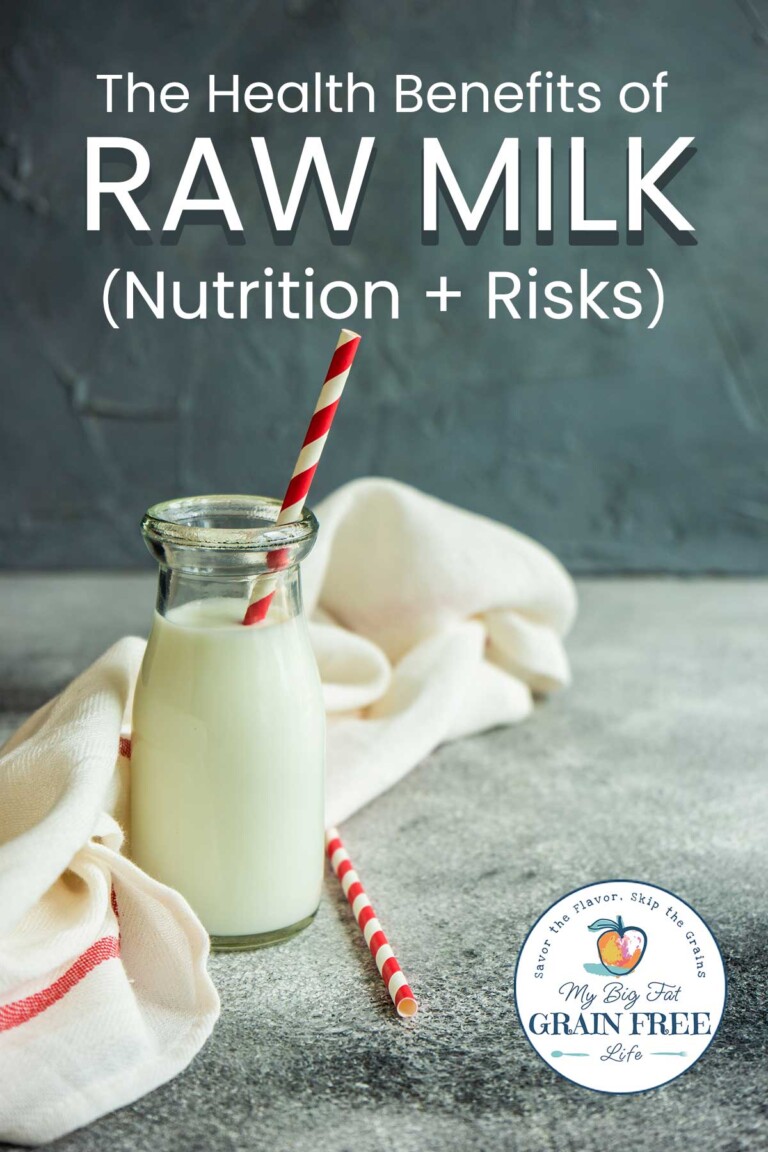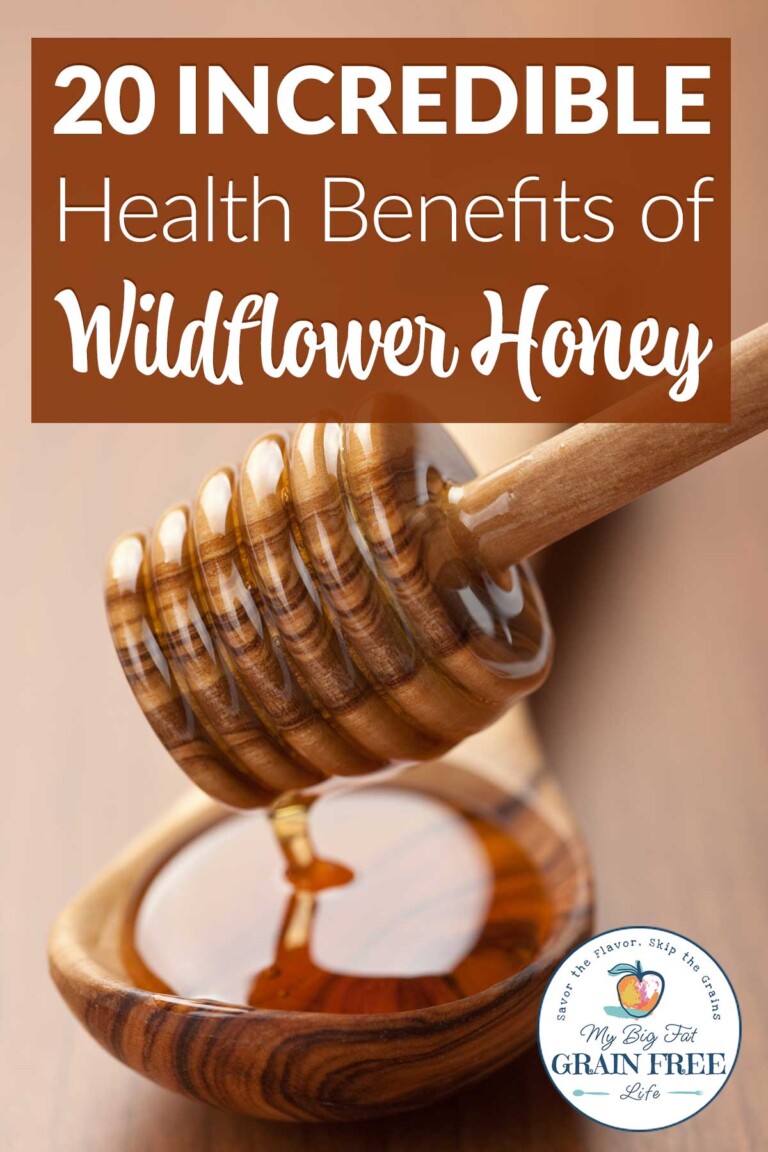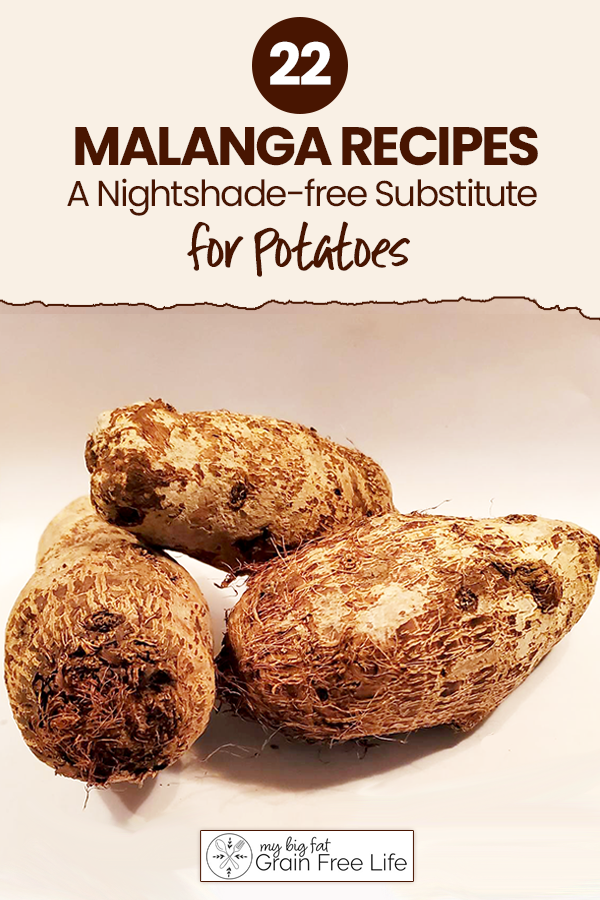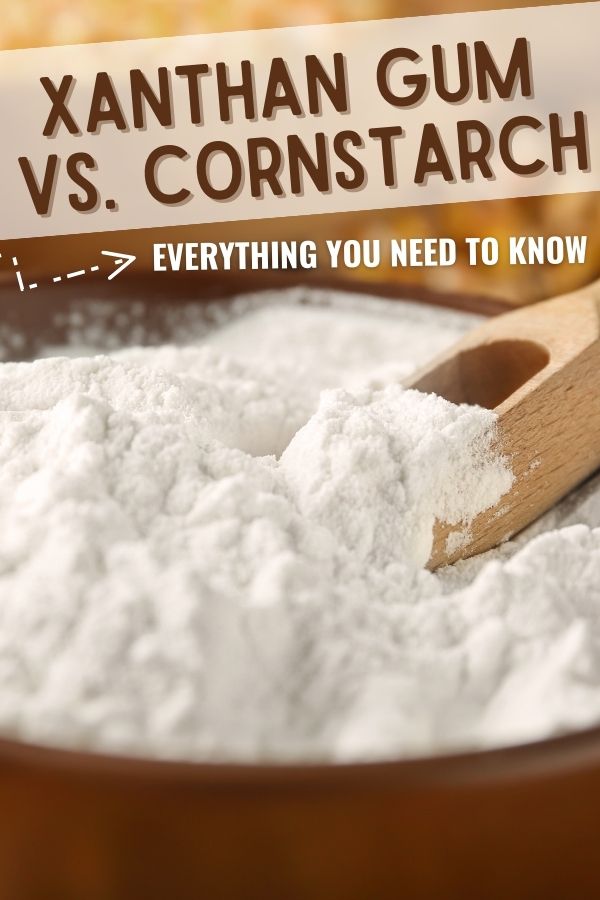Pseudo Grains: What You Need to Know + Full List
This post may contain affiliate links. If you make purchase after clicking a link, I may receive a commission at no extra cost to you.
Last Updated on December 27, 2023
Not sure what pseudo grains are? Learn everything you need to know about pseudo grains, as well and the best ways to consume them for maxiumum nutrition. I’ll also help you distinguish pseudo grains from actual grains by providing a full list.

Pseudo Grains
If you’re unfamiliar with pseudo grains, keep reading to learn everything you need to know about them. We will explore what pseudo grains are, the different types available, and their nutritional benefits. We’ll provide you with a comprehensive list of pseudo grains, along with some guidance on soaking and fermenting them, as well as situations in which you might need to avoid them.
What is a Pseudo Grain?
Pseudo grains are seeds that are consumed and cooked like grains, but they do not come from seeds of grasses like wheat, rice, or corn. Instead, they belong to different plant families.
Despite not being true grains from the grass family, they share similar characteristics in terms of taste, texture, and utilization. Pseudo grains can be a good option for some people who have a gluten sensitivity but are trying to increase their whole-grain intake.

List of Pseudo Grains
Here’s a list some of the most well-known pseudo grains:
Quinoa
Originating from South America, quinoa grains are a complete protein source and an excellent alternative for individuals following a gluten-free diet.
Quinoa is not only packed with protein but also contains all nine essential amino acids, making it a nutritious choice for vegetarians and vegans. Additionally, quinoa is rich in fiber, vitamins, and minerals, such as magnesium and phosphorus.
Types of Quinoa
There are several different types of quinoa available. Some common varieties include:
- White Quinoa: This is the most widely available type of quinoa and has a mild, nutty flavor. It cooks up fluffy and is versatile for use in various dishes.
- Red Quinoa: Red quinoa has a slightly earthier flavor compared to white quinoa. It also retains its shape better when cooked, making it ideal for salads or pilafs.
- Black Quinoa: Black quinoa has a rich, robust flavor and a slightly crunchy texture.
- Tri-Color Quinoa: This variety is a blend of white, red, and black quinoa, offering a combination of flavors and textures. It can be used interchangeably with other types of quinoa.
- Rainbow Quinoa: Rainbow quinoa is similar to tri-color quinoa but may include additional colors such as yellow or orange. It offers a visually appealing presentation and can be used in the same way as other types of quinoa.
Learn: Quinoa Flakes Vs Quinoa

Amaranth
This pseudo grain is native to the Americas and boasts high levels of protein, fiber, and various essential minerals.
Amaranth grains are particularly unique because it contains a rare amino acid called lysine, which is often lacking in other grains. Lysine is essential for the growth and repair of tissues. In addition to its nutritional benefits, amaranth has a somewhat nutty flavor and a pleasant, chewy texture.
Common Types of Amaranth
There are several different types of Amaranth, and you can even eat it as a type of microgreen!
- Grain Amaranth: This type of Amaranth is commonly used for its edible seeds. It has a nutty flavor and a slightly chewy texture when cooked.
- Leaf Amaranth: Also known as Chinese spinach or callaloo, this type of Amaranth is grown for its tender leaves, which are used in cooking and salads. It has a mild, spinach-like taste.
- Love-Lies-Bleeding: This variety of Amaranth is primarily cultivated for its ornamental purposes due to its striking red flowers that cascade down like long tassels.
- Red Garnet: Red Garnet is another decorative variety of Amaranth with vibrant red foliage and clusters of small red flowers.
- Joseph’s Coat: This type of Amaranth is valued for its colorful foliage, which can range from green to yellow, red, and purple. It is often grown as an ornamental plant in gardens.

Buckwheat
Despite its name, buckwheat is not related to wheat and is entirely gluten-free. It is commonly used in dishes like pancakes, noodles, and porridge.
Buckwheat is a good source of fiber and contains important minerals, such as manganese, copper, and magnesium. It also contains antioxidants, which help protect the body against free radicals. Buckwheat has a distinct earthy flavor and a slightly nutty taste.
Types of Buckwheat
Buckwheat comes in various forms. Some of the different types of buckwheat include:
- Whole Buckwheat Groats: These are the unprocessed form of buckwheat, with the outer husk removed. They have a nutty flavor and can be used in a variety of dishes.
- Buckwheat Flour: This is ground buckwheat groats, which can be used as a gluten-free alternative to regular flour in baking.
- Buckwheat Noodles: Also known as soba noodles, these are made from buckwheat flour and are commonly used in Japanese cuisine.
- Buckwheat Flakes: These are flattened and toasted buckwheat groats that can be enjoyed as a breakfast cereal or added to baked goods for texture.

Teff
Traditionally grown in Ethiopia, teff is known for its rich iron content. It’s a gluten-free grain that is also high in protein, fiber, and various vitamins and minerals.
It is particularly rich in calcium, making it an excellent choice for individuals who are lactose intolerant or following a dairy-free diet. In addition to its nutritional benefits, teff has a slightly sweet and nutty flavor, which adds depth to dishes.
Types of Teff
There are three main types of Teff:
- White Teff: This variety of Teff has a mild, nutty flavor and is commonly used to make injera, a traditional Ethiopian flatbread.
- Brown Teff: Brown Teff has a slightly stronger flavor compared to white Teff and is often used in porridge, baked goods, and as a gluten-free flour substitute.
- Mixed Color Teff: This type of Teff is a blend of white and brown varieties, offering a balance between the two flavors. It can be used in various recipes just like white and brown Teff.

Chia
Chia is a pseudo grain that comes from the plant Salvia hispanica. It is native to Central America and South America and has been used as a food source for centuries. Chia seeds are small, oval-shaped, and have a mild, nutty flavor.
These superfood seeds are an excellent source of fiber, protein, omega-3 fatty acids, and various vitamins and minerals. Chia seeds are also high in antioxidants, which help protect the body against damage from free radicals.
Types of Chia Seeds
- White Chia Seeds: These chia seeds are the most common and widely available variety. They have a neutral flavor and can be easily incorporated into various recipes without altering the taste.
- Black Chia Seeds: Black chia seeds are slightly smaller than white ones and have a more intense flavor. They have a nuttier taste and are often preferred for their stronger flavor profile.
- Brown Chia Seeds: Brown chia seeds are less common but offer similar nutritional benefits as white and black varieties. They have a slightly earthier taste compared to white chia seeds.
- Sprouted Chia Seeds: Sprouted chia seeds undergo a germination process, which increases their nutrient content and digestibility. They are easier to digest compared to regular chia seeds and may be preferred by individuals with digestive sensitivities.
- Milled Chia Seeds: Milled or ground chia seeds refer to the finely ground powder made from whole chia seeds. This form is convenient for incorporating into smoothies, baked goods, or as a thickening agent in sauces and dressings.

Wild Rice
Wild rice is not actually rice but a type of aquatic grass seed that grows naturally in shallow water. It has a distinct chewy texture and a rich, nutty flavor. Wild rice is native to North America and has been traditionally harvested by Native American tribes.
It’s low in fat and calories but high in fiber, protein, and essential minerals such as magnesium and phosphorus. Wild rice also contains antioxidants that can support overall health.
Main Types of Wild Rice
There are three main types of wild rice:
- Northern Wild Rice: This type of wild rice is the most common and widely available. It has a long, slender grain with a dark brown to black color. Northern wild rice has a nutty flavor and a slightly chewy texture. It is often used in pilafs, salads, soups, and side dishes.
- Texas Wild Rice: Texas wild rice is an endangered species native to the San Marcos River in Texas. It has a shorter grain than Northern wild rice and a lighter brown color. Texas wild rice has a delicate flavor and a tender texture. Due to its limited availability, it is primarily used for conservation purposes rather than culinary use.
- Manoomin Wild Rice: Manoomin is the Ojibwe name for wild rice, which holds cultural significance for Native American communities in the Great Lakes region of North America. Manoomin wild rice has a shorter grain than Northern wild rice and ranges in color from light tan to dark brown. It has a rich, earthy flavor and a tender yet firm texture when cooked properly. Manoomin wild rice is commonly used in traditional Native American dishes such as soups, stews, casseroles, and desserts.

Millet
Millet is a small grain that belongs to the Poaceae family. It has been cultivated for thousands of years across Asia and Africa. Millet has a slightly sweet flavor with hints of nuttiness.
Millet is gluten-free and rich in fiber, making it beneficial for digestion. It’s also a good source of protein, B vitamins, magnesium, phosphorus, and other essential minerals.
Types of Millet
Here are the main types of millet and the differences between them:
- Pearl Millet: Also known as bajra, pearl millet is one of the most widely cultivated types of millet. It has a slightly nutty flavor and a coarse texture. Pearl millet is rich in protein, fiber, and minerals like iron and magnesium.
- Finger Millet: Finger millet, also called ragi, is a popular variety of millet in India and Africa. It has a reddish-brown color and a mild, earthy taste. Finger millet is highly nutritious and contains good amounts of calcium, iron, and essential amino acids.
- Foxtail Millet: Foxtail millet gets its name from the shape of its seed heads, which resemble fox’s tails. It has a mild flavor and a soft texture when cooked. Foxtail millet is high in fiber and rich in antioxidants like phenolic compounds.
- Proso Millet: Proso millet, also known as white or common millet, is small in size with a creamy color. It has a subtle nutty taste and a fluffy texture when cooked. Proso millets are gluten-free grains that provide essential nutrients like B vitamins, iron, magnesium, and phosphorus.
- Barnyard Millet: Barnyard millets are tiny grains that resemble broken rice when cooked. They have a slightly sweet flavor with a chewy texture. Barnyard millets are low in glycemic index (GI) which makes them suitable for people with diabetes or those following a low GI diet.

Sorghum
Sorghum is a cereal grain that originated in Africa but is now cultivated globally. It has a mild, slightly sweet flavor and can be cooked into various dishes. Sorghum is often used as a gluten-free alternative to wheat flour.
Nutritionally, sorghum is rich in dietary fiber, antioxidants, and essential minerals like iron and phosphorus. It is also a good source of energy due to its complex carbohydrates content.
Types of Sorghum
- Grain Sorghum: Also known as milo, this type of sorghum is primarily grown for its grain. It has a high starch content and is commonly used for animal feed or processed into food products such as flour, meal, or flakes.
- Sweet Sorghum: Unlike grain sorghum, sweet sorghum is grown for its juice rather than its grain. The juice can be extracted from the stalks and used to make syrup or fermented to produce ethanol. Sweet sorghum syrup is often used as a natural sweetener in baking or as a topping for pancakes and waffles.
- Broomcorn Sorghum: Broomcorn sorghum is grown for its long, sturdy stalks that are used to make brooms, brushes, and other decorative items. This type of sorghum does not produce edible grains or sweet juice but is valued for its ornamental appeal.
- Forage Sorghum: Forage sorghums are specifically grown as livestock feed due to their high fiber and protein content. They can be grazed by animals directly in the field or harvested and stored as silage or hay.

Kaniwa
Kaniwa is a pseudo grain that comes from the Chenopodium pallidicaule plant, which is native to the Andean region of South America. It resembles quinoa but has a smaller size and nuttier flavor.
Kaniwa is highly nutritious and rich in protein, dietary fiber, and essential nutrients such as iron, calcium, magnesium, and phosphorus. It also contains antioxidants that can help protect against oxidative stress.
Kaniwa is also considered ancient grains and are suitable for individuals following gluten-free or plant-based diets.
Types of Kaniwa
There are two main types of Kaniwa: red and black.
- Red Kaniwa: This type is the most common variety. It has a reddish-brown color and a slightly nutty flavor. Red kaniwa is often used in various dishes, such as salads, soups, and side dishes.
- Black Kaniwa: This less common variety has a darker color and a stronger earthy flavor compared to red Kaniwa. Black kaniwa is often used in traditional Andean cuisine and can be cooked similarly to quinoa.
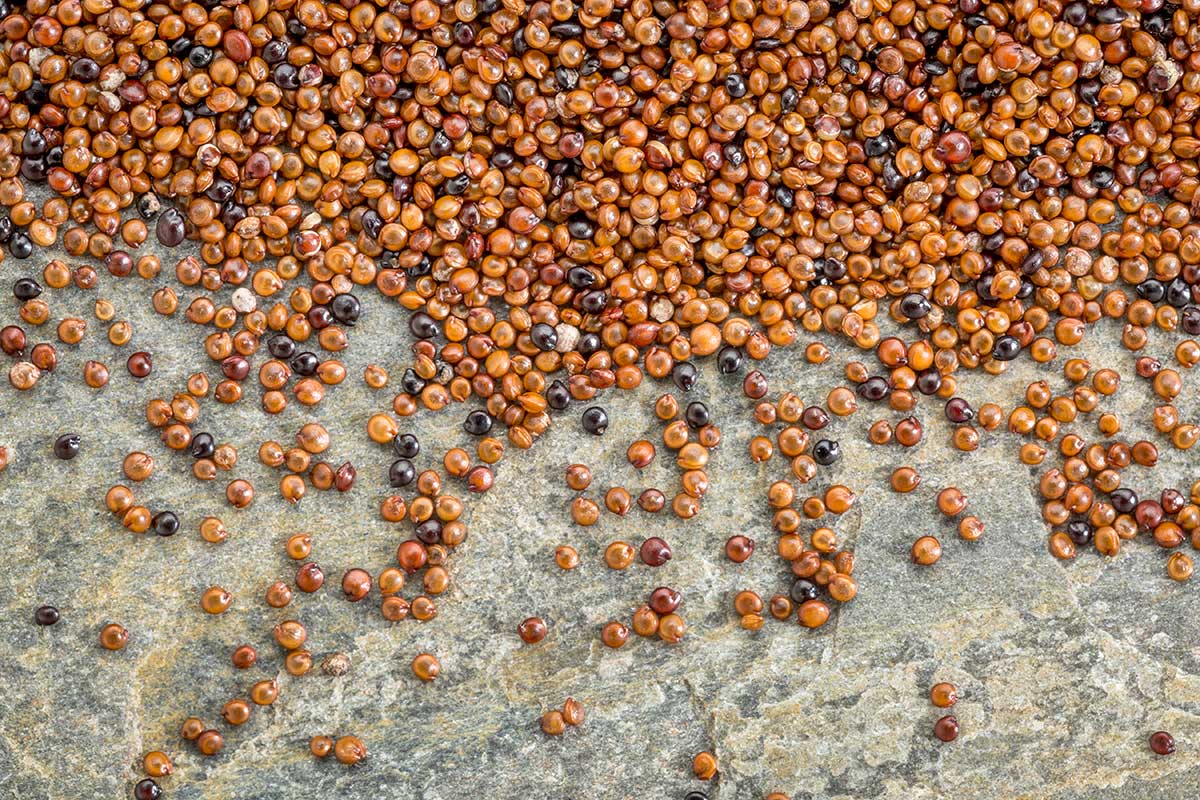
Nutritional Value of Pseudo Grains
Unlike refined grains that undergo extensive processing, pseudo grains are generally consumed in their whole form, providing a significant amount of fiber, protein, minerals, and antioxidants.
For instance, quinoa is considered a complete protein, containing all nine essential amino acids. Amaranth is rich in calcium, iron, and magnesium, while buckwheat offers high levels of fiber and nutrients like manganese, phosphorus, and zinc. Teff, on the other hand, is an excellent source of iron and vitamin C.
Pseudo grains are a popular choice for people on plant-based diets. They are also often considered a suitable grain substitute for those with gluten sensitivities or celiac disease.
How Pseudo Grains Differ from Traditional Grains
While pseudo grains share resemblances with traditional grains, there are some fundamental differences to consider. Traditional grains such as wheat, rice, and corn are grasses, while pseudo grains are seeds from non-grass plants.
This distinction affects their nutritional composition and can be significant for individuals with specific dietary requirements.
Additionally, traditional grains often contain gluten, a protein that can cause adverse reactions in individuals with celiac disease or gluten sensitivities.
Pseudo grains, on the other hand, are typically gluten-free, making them excellent alternatives for those who need to avoid gluten or simply want to diversify their grain intake.
A Guide to Cooking with Pseudo Grains
Here are some tips to help you make the most out of cooking with pseudo grains:
- Before cooking, rinse pseudo grains thoroughly to remove any debris or bitter flavor.
- To remove lectins from some grains, it’s a good idea to soak them before cooking.
- For added flavor, consider toasting them lightly in a dry pan before cooking.
- Typically, most pseudo grains require a ratio of 1:2 (grain to liquid) when cooking. However, it’s essential to follow the specific instructions for each grain, as cooking times and ratios may vary.
- Experiment with different seasonings and herbs to enhance the taste of your dishes.
The Benefits of Eating Pseudo Grains
Incorporating pseudo grains into your diet can bring many benefits. Some of the key advantages include:
- Increased intake of fiber, protein, and essential nutrients.
- Diversification of diet, adding new flavors and textures to your meals.
- Gluten-free options for individuals with gluten sensitivities or celiac disease.
- Improved blood sugar control, thanks to their lower glycemic index compared to refined grains.
- Support for sustainable agriculture, as pseudo grains often require fewer resources to grow compared to traditional grains.
Soaking Pseudo Grains
There’s a good reason some choose to soak pseudo grains before cooking. Soaking can offer several benefits, such as improved digestibility and nutrient absorption.
Soaking helps break down phytic acid, a naturally occurring compound that can interfere with mineral absorption. It also helps reduce cooking time and can enhance the overall texture of the grains.
Soaking pseudo grains is especially important when you are using them to make plant based milk.
How to Soak Pseudo Grains
To soak pseudo grains, simply rinse them thoroughly and place them in a bowl with enough water to cover them completely. Allow them to soak for at least 6-8 hours or overnight. After soaking, rinse the grains again before cooking them according to your recipe.
Fermenting Pseudo Grains
Fermentation is an ancient preservation technique that not only extends the shelf life of foods but also enhances their nutritional value and flavor. Fermented pseudo grains offer additional probiotics, which can support gut health and improve digestion.
How to Ferment Pseudo Grains
To ferment pseudo grains, mix the grains with water to create a loose batter and allow them to ferment at room temperature for 12-24 hours. The length of fermentation depends on various factors, including the desired level of tanginess and your personal preference.
Once fermented, you can use the grains in recipes like bread, pancakes, or porridge.
How to Store Pseudo Grains
The best storage tips for pseudo grains are as follows:
- Store In An Airtight Container: Pseudo grains like quinoa, amaranth, and buckwheat should be stored in airtight containers to protect them from moisture and pests.
- Keep In A Cool, Dry Place: Pseudo grains should be stored in a cool and dry place to maintain their freshness and prevent them from spoiling.
- Avoid Exposure To Sunlight: Sunlight can degrade the quality of pseudo grains over time. Therefore, it is important to store them in a dark place or use opaque containers to protect them from direct sunlight.
- Check For Any Signs Of Spoilage: Before storing pseudo grains, make sure there are no signs of spoilage such as mold or insects. Discard any grains that appear off or have an unpleasant smell.
- Rotate Your Stock: To ensure freshness, it is recommended to rotate your stock of pseudo grains regularly. Use older batches first and replenish with fresh ones.
Why You Might Need to Avoid Pseudo Grains
While the grain category of foods offer many health benefits, some individuals may need to avoid them for various reasons. Here are a few scenarios in which pseudo grains might not be suitable:
- Lectins: Pseudo grains, like other seeds and legumes, contain lectins. Lectins are naturally occurring proteins that can cause digestive issues for some individuals. If you experience symptoms such as bloating, gas, or stomach discomfort after consuming pseudo grains, you may need to consider reducing or avoiding them.
- Saponins: Some pseudo grains, such as quinoa, contain naturally occurring compounds called saponins. These compounds can have a bitter taste and may cause gastrointestinal irritation or allergies in sensitive individuals. Rinsing and cooking pseudo grains thoroughly can help reduce saponin content.
- Protease Inhibitors: Pseudo grains also contain protease inhibitors, which can interfere with protein digestion. If you have digestive issues or enzyme deficiencies, you might need to limit your intake of pseudo grains.
As with any dietary change, it’s essential to listen to your body and consult with a healthcare professional or registered dietitian if you have specific concerns or underlying health conditions.
FAQ on Pseudo Grains
Are psuedo grains whole grains?
Yes, pseudo grains are considered whole grains.
Are Brown Rice and White Rice Pseudo Grains?
Brown rice and white rice are not pseudo grains, however wild rice is a pseudo grain.
What Are Cereal Grains?
True cereals are grasses that produce edible seeds, such as wheat, corn, and rice.
What are Ancient Grains?
Ancient grains refer to a group of grains that have been largely unchanged for thousands of years, including quinoa, amaranth, and spelt.
Can I Eat Pseudo Grains If I Have A Leaky Gut?
If you have a leaky gut, it is generally recommended to avoid or limit consumption of pseudo grains
What Diets Restrict Pseudo Grains?
The following diets do NOT allow pseudo grains:
- Paleo Diet
- Autoimmune Protocol
- GAPS
- SCD
- Keto (there are some disagreements about this)
- Whole 30
Final Summary
Now that you know what is actually classified as a pseudo grain, you can explore the potential of adding these foods to your diet. Pseudo grains can be a healthy alternative to regular grains for those on a gluten-free diet. If you follow our tips for soaking and fermenting them, your gut will thank you!
Sources
- https://www.healthline.com/nutrition/foods/buckwheat
- https://www.eatingwell.com/article/8068328/is-quinoa-good-for-you
- https://www.medicalnewstoday.com/articles/amaranth
- https://www.healthline.com/nutrition/teff-flour
- https://www.webmd.com/diet/health-benefits-chia-seeds
- https://www.healthline.com/nutrition/wild-rice-nutrition-review
- https://www.medicalnewstoday.com/articles/what-is-millet
- https://www.healthline.com/nutrition/sorghum
- https://www.healwithfood.org/health-benefits/kaniwa-nutrition-facts.php


